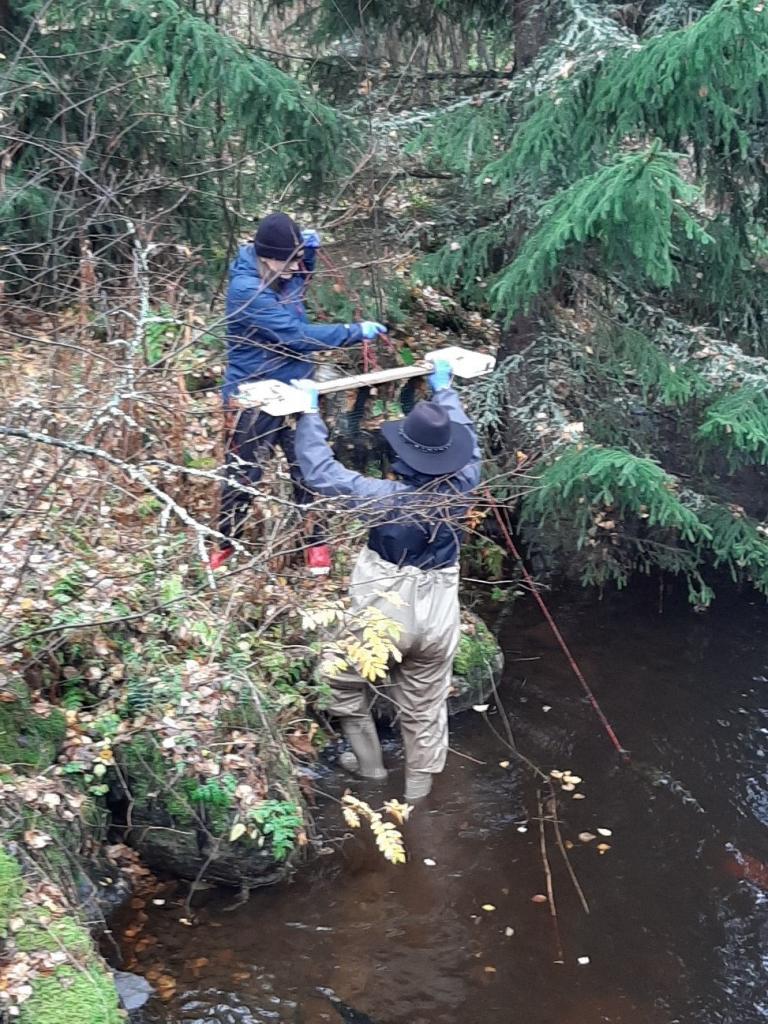The second sampling round successfully done
The second sampling round of the project was carried out at weeks 39 and 41. In this round, was seen the impact of learning by doing, at least on activities on the Finnish side. The activity lacked the hassle typical of the first round. The work was straightforward and efficient. As in the first round, the operation was started by collecting moss from Sukkulanjoki for the analysis of heavy metal concentrations.


Collecting moss from Sukkulanjoki
At the same time as the heavy metal collectors were put in the river, water samples were also taken. At the same time, both Karelvodokanal's experts on the Russian side and SYKE's samplers on the Finnish side were taking water samples in Tohmajoki. Simultaneous sampling gives comparable results. So far, the coronavirus has prevented the examination of samples by testing the same sample in both Finland and Russia. On the Russian side, only water samples are taken and no heavy metal collectors are used.


Koitajoki. Heavy metal collectors were taken to both rivers



Water sampling at the lower reaches of the Tohmajoki River, Russia.



Water sampling at the upper reaches of the Tohmajoki River, Finland.
Finally, exactly two weeks after the heavy metal collectors were put in the river, they were lifted up from the river and the journey of the mosses to laboratory analyzes can begin. Next time samples will be taken in spring 2021.



After two weeks in the river, the mosses are sent to the laboratory for analysis.





